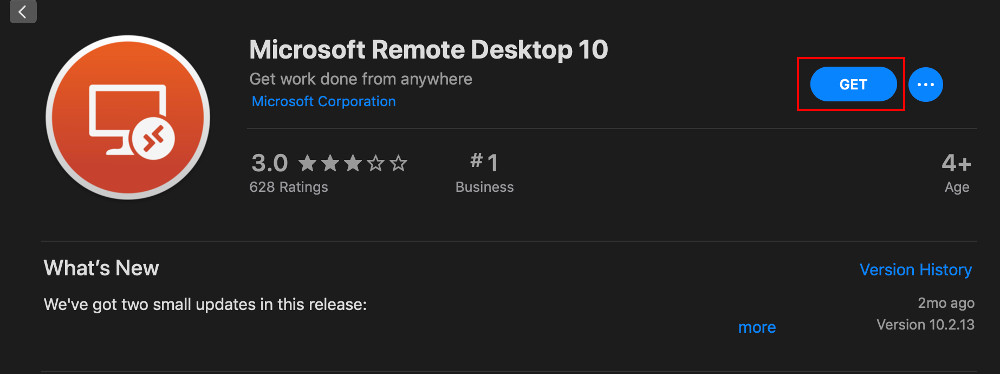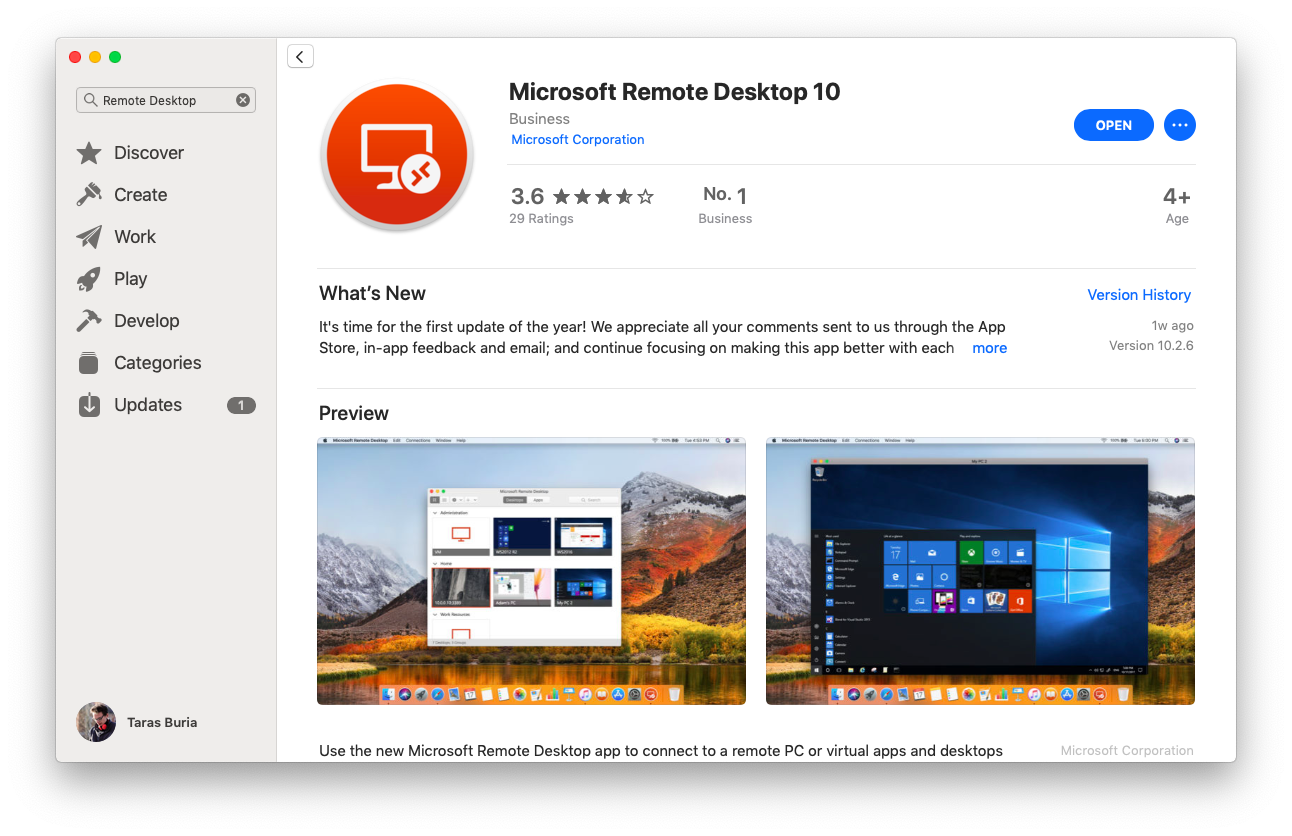- Open Rdp File In Mac Os
- Open Rdp File In Mac High Sierra
- Open Rdp File Mac Os
- Open Rdp File In Mac Operating System
Jun 22, 2020 Don’t allow open RDP connections over the internet. If you need to use Windows Remote Desktop over the internet, set up your own virtual private network (VPN) or use an RD Gateway to create a secure tunnel to your local network first. Allowing an open RDP connection over the internet is extremely risky, so don’t leave it to chance. Option 2 - RDP Wrapper. Instead of modifying termsrv.dll file you can use RDP Wrapper which acts as a middleman between Terminal Services and Service Control Manager. This way you don't need to touch termsrv.dll file. Actually, if you already modified your termsrv.dll file, you need to revert to the original version before using this method. NOTE: By default the local Administrators group will be allowed to connect with RDP. Also the user that is currently logged in will also be allowed to connect. To disable RDP RDP with the PowerShell, use the following steps. Launch PowerShell as Administrator. Create a PS Session with the desired target computer.
By default on a Windows Server Product Windows Remote Management (WinRM) is enabled, but Remote Desktop (RDP) is Disabled. On workstation operating systems neither is enabled by default, so if you want to be able to accomplish the following you will need to enable WinRM on the workstations.
Enabling RDP remotely.
Method 1: Command Line
To enable RDP with the Command Prompt, use the following steps.
- Launch the Command Prompt as Administrator.
- Type the following command:
Reg add“computernameHKLMSYSTEMCurentControlSetControlTerminal Server”/vfDenyTSConnections/tREG_DWORD/d1/f |
Method 2: Using PowerShell
To enable RDP with the PowerShell, use the following steps.
Option 1
To enable RDP:
- Launch PowerShell as Administrator.
- Type the following command and create a script block and use the Invoke-Command cmdlet:
Invoke-Command–Computername“server1”,“Server2”–ScriptBlock{Enable-NetFirewallRule-DisplayGroup'Remote Desktop'} |
NOTE: By default the local Administrators group will be allowed to connect with RDP. Also the user that is currently logged in will also be allowed to connect.
To disable RDP with the PowerShell, use the following steps.
- Launch PowerShell as Administrator.
- Type the following command:
Set-ItemProperty-Path'HKLM:SystemCurrentControlSetControlTerminal Server'-Name'fDenyTSConnections'–Value0 |

NOTE: Enabling RDP through PowerShell will not configure the Windows Firewall with the appropriate ports to allow RDP connections.
Type the following:
Set-ItemProperty-Path'HKLM:SystemCurrentControlSetControlTerminal Server'-Name'fDenyTSConnections'–Value1 |
Method 3: Use Group Policy
If you have numerous Servers and/or Workstations that you need to enable RDP on and they are in the same Organization Unit structure in Active Directory you should enable RDP through Group Policy.
To enable RDP Using Group Policy.
- Launch the Group Policy Management Console (GPMC)
- Either edit an existing Group Policy Object (GPO) or create a new GPO.
- Navigate to the following GPO node:

Computer ConfigurationAdministrative TemplatesWindows ComponentsRemote Desktop ServicesRemote Desktop Session HostConnections
- In the Settings pane double click Allow users to connect remotely by using Remote Desktop Services.
- Select the Enable Radial button select OK.
- Close the GPO editor and link the GPO to the appropriate Organizational Unit.
NOTE: Enabling RDP through GPO will configure the Windows Firewall with the appropriate ports to allow RDP connections.
Note: In all the methods demonstrated in this blog any member of the local Remote Desktop Users group will be able to connect to the target computers.
Until next time – Ride Safe!
Rick Trader
Windows Server Instructor – Interface Technical Training
Phoenix, AZ
Open Rdp File In Mac Operating System
You May Also Like
GPMC, GPO, Group Policy Management Console, Group Policy Object, Invoke-Command, Powershell, RDP, RDP connections, remote desktop, Windows Remote Management, WinRM
